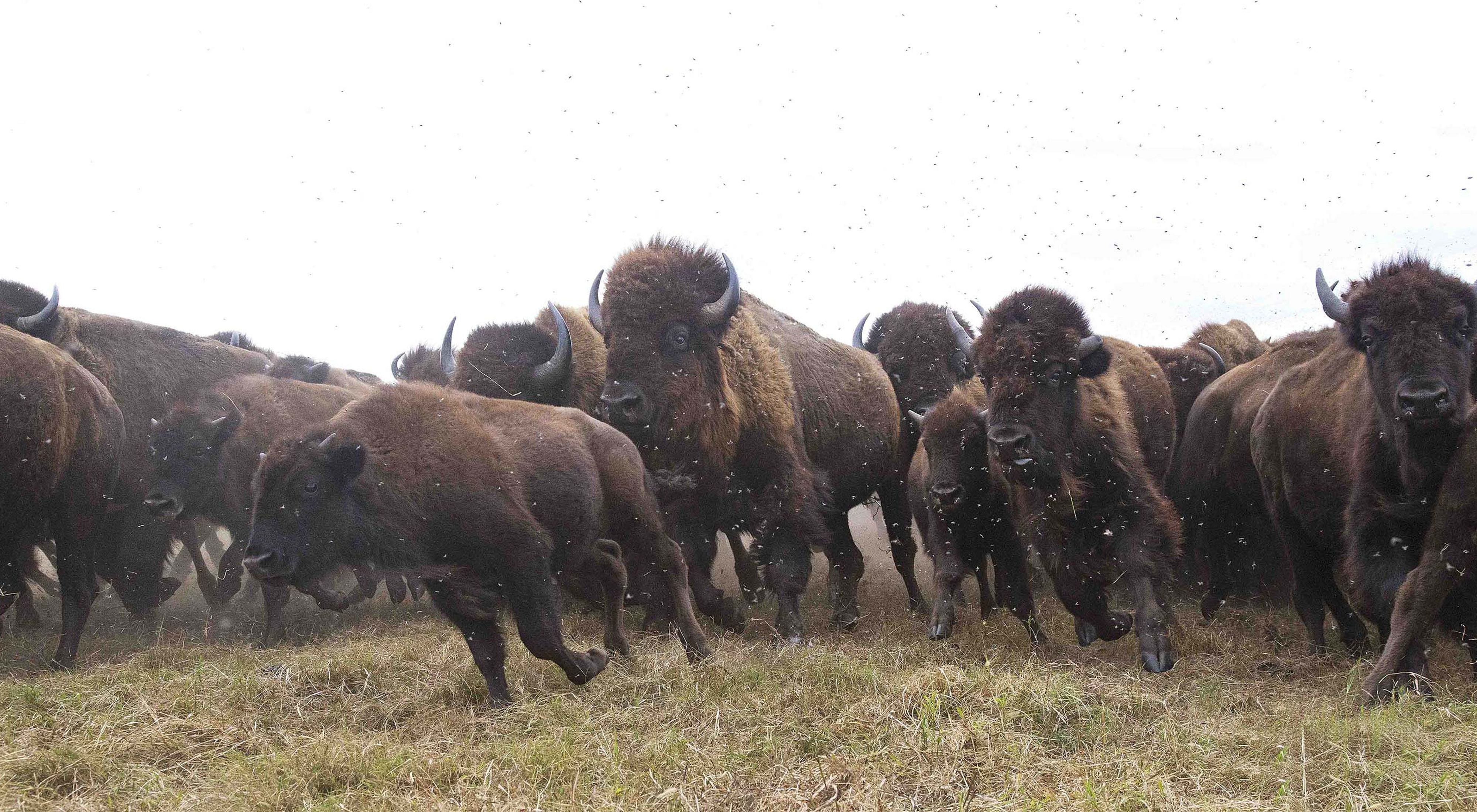Where Did All the Bison Go?
Nestled between the Appalachian Mountains to the east and the Rocky Mountains on the west, lived an enormous herd of bison roaming across the Great Plains of central North America. It is estimated that 30 million bison were wandering the plains when Columbus landed on the eastern shores. These incredible animals were so iconic that they became a national symbol of pride for the seemingly endless resources of the newly found continent.
However, in the late 1800s these bison were almost entirely driven to extinction with less than 1,000 individual animals remaining. A census conducted in 1905 indicated that there were 835 wild bison and 256 bison in captivity at that time. Sanctuaries, zoos and parks were safe havens for these special animals and helped to sustain and increase their population size. The first national preserve for bison was founded in 1907 near Cache, OK and later became the Wichita Mountains National Wildlife Refuge.
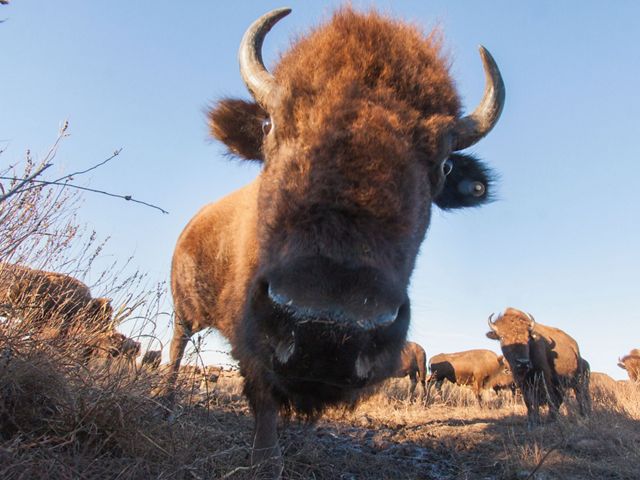
Years later, hunting laws and other protective measures allowed the remaining bison to live, thrive and multiply. Today their numbers have rebounded to around 350,000—about 1% of their original herd size—but enough to keep them out of the dangers of extinction.
Approximately 15,000 animals can be found across the public lands of the United States. Remaining bison populations are in private herds such as those maintained by The Nature Conservancy.
The Nature Conservancy has plains bison (Bison bison bison) on twelve native grassland preserves in North Dakota, South Dakota, Nebraska, Iowa, Illinois, Indiana, Colorado, Kansas, Missouri and Oklahoma. Eleven of these herds are owned and managed by the Conservancy and one herd is owned by a university that manages the TNC-university owned preserve. All locations are home to year-round resident herds totaling approximately 6,000 bison across 130,000 acres of native rangeland.
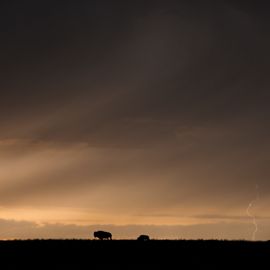

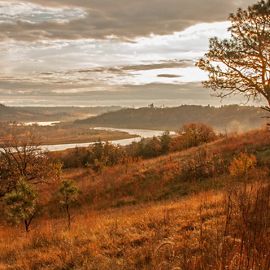
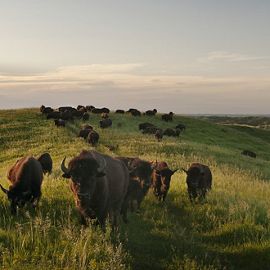
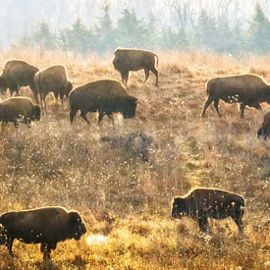

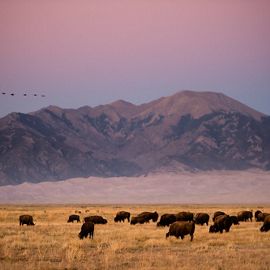

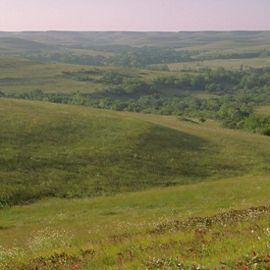

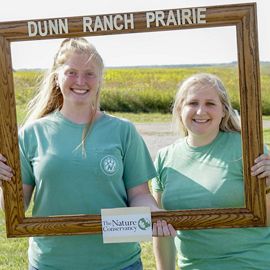
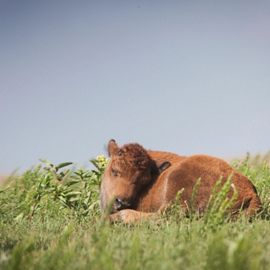
The Nature Conservancy Bison Herds See where the bison live and roam across The Nature Conservancy preserves in North America.
6 Fast and Furry Bison Facts
-
‘Wallow’ you waiting for?
Wallowing is practiced by males and females of all ages. This behavior is important for grooming, sensory stimulation, alleviating skin irritation and even used in reproduction behavior. Wallows also serve as water reservoirs making small ponds that become habitat for vertebrates and invertebrates.
Prairie Predators
Historically, the bison’s most important predator was the wolf. Wolves constantly followed the large herds singling out the old, incapacitated and very young animals. Even solitary adult males were not exempt from an attack—grizzly bears could kill an adult bison. Mountain lions and coyotes were also opportunistic predators of the young calves. Humans had their role to play too. The survival of many Native American tribes were closely tied to the bison herds.
Beyond predators and human activity, one of the primary dangers for bison herds were iced-over rivers. Thousands of bison drowned, particularly in the northern United States, when the crushing weight of crossing herds caused the ice to give way.
Since the wolf and grizzly bear are gone from the tallgrass prairies of the Great Plains region, humans must act as the predator. Each year, the herds are roundup into corrals to receive annual vaccinations, weight checks as well as managing the herd size by culling individual animals.
We know that you’re wondering and the answer is no, The Nature Conservancy has no plans to reintroduce wolves to the Tallgrass Prairie Preserve. It isn’t big enough and they wouldn’t mix well with our neighbors’ cattle.
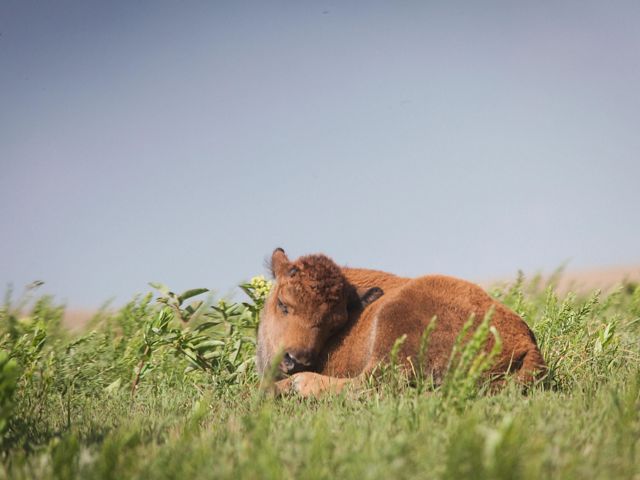
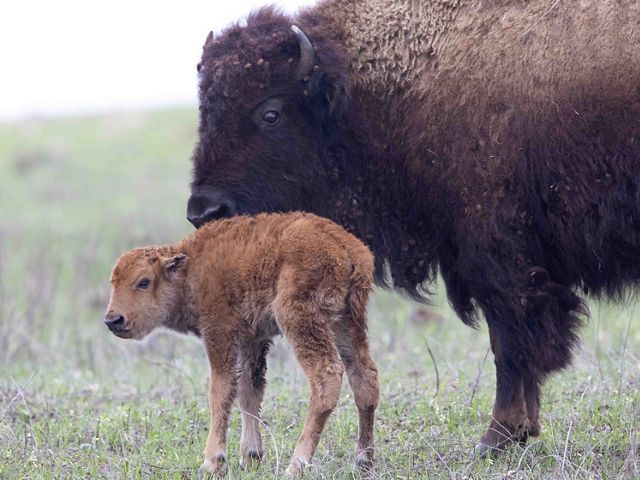
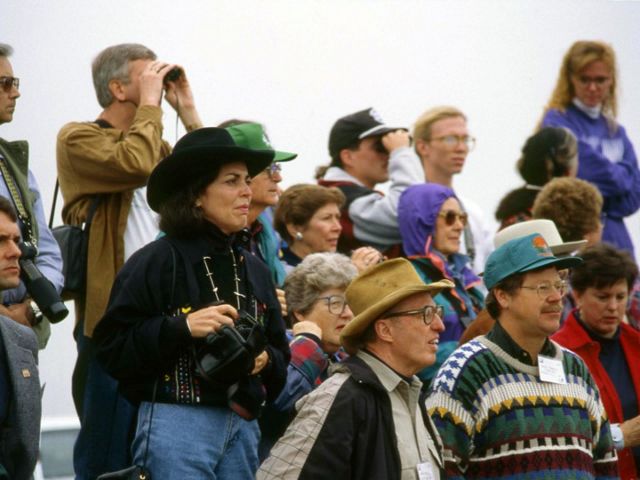
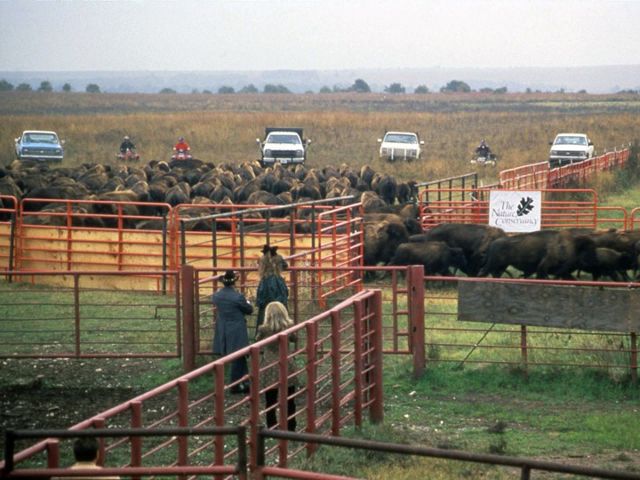
Watch the 1993 Bison Release
Take a trip in the Youtube time machine to watch a CBS news report covering the historic bison release featuring General Norman Schwarzkopf.
Returning Bison to the Tallgrass Prairie
In 1993 The Nature Conservancy reintroduced bison at the Joseph H. Williams Tallgrass Prairie Preserve as a critical part of restoration to the tallgrass prairie ecosystem. Preserve visitors can usually see one or more small groups of bison by driving the 15-mile bison loop. Still, they are wild animals with thousands of acres to roam and may be hidden by the rolling prairie terrain.
The Tallgrass Prairie Preserve bison herd began with 300 animals generously donated by the Ken-Ada Ranch north of Bartlesville named the Christina Adams Bison Herd in honor of the daughter of ranch owners Kenneth and Dianna Adams. This herd has since grown and lives on more than 30,000 acres. The herd size in the summer swells to approximately 2,700 animals that includes the calves born earlier in spring. After the annual roundup each fall the overwintering herd size is approximately 2,100 individuals.

Stay connected for the latest news from nature.
Get global conservation stories, news and local opportunities near you. Check out a sample Nature News email
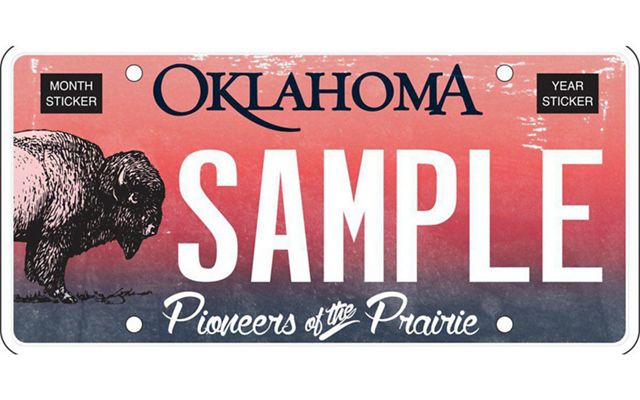
Join the Herd!
Support bison conservation in style with this colorful license plate!
Managing The Herd
All young females who have not yet given birth, also known as heifer calves, are vaccinated against brucellosis and all incoming animals are tested for brucellosis and tuberculosis and quarantined before admission to the herd. Even though there is no substantiated evidence of bison to cattle transmission of brucellosis, many efforts are taken to ensure the herd remains free from these diseases. During the annual roundup all keeper animals are vaccinated for several bovine diseases and treated for external and internal parasites.
Bulls (adult males) are sold at 6-7 years of age. Why? As they get older they become more aggressive and dangerous. Cows (adult females) are sold at 10-12 years of age. They are still productive through their early twenties but their sale value is higher as teenagers and as they age, they are less physically fit for withstanding the rigors of roundup.
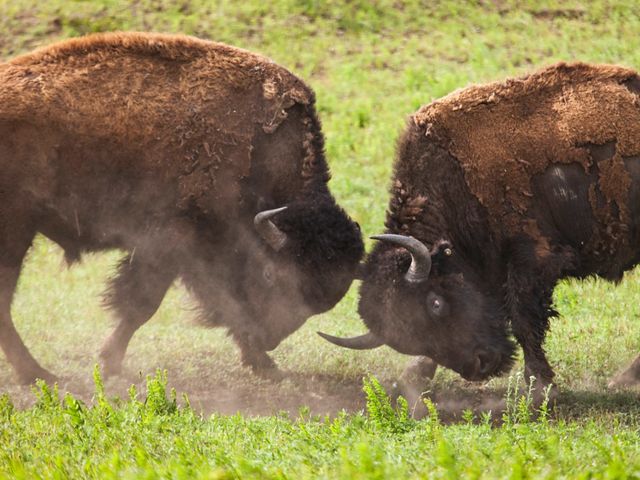
The herd receives no supplemental feeding but because the animals are in a restricted range, salt with trace minerals is provided. Water is available in natural creeks and ponds.
For research and good record-keeping, each individual animal in the herd is identified with an ear-tag transponder. This tag is read by holding a wand near the animal’s head and the wand transmits the tag’s data to a computer. Each transponder transmits a unique number, which is then assigned to that particular animal to track the animal’s sex, origin, age, weight, pregnancy status and general health.
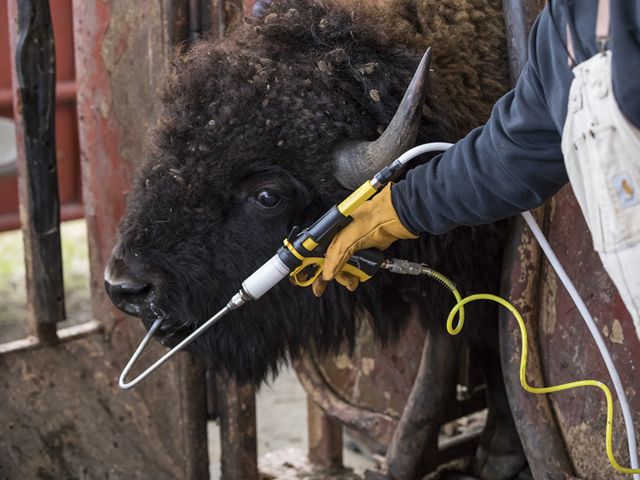
Bison Release
Support Bison Conservation in Oklahoma
Since 1986, we have worked to conserve Oklahoma’s magnificent landscapes and unique biodiversity totaling more than 100,000 acres. When you donate today, you will help ensure a thriving natural environment for future generations of Oklahoma.
